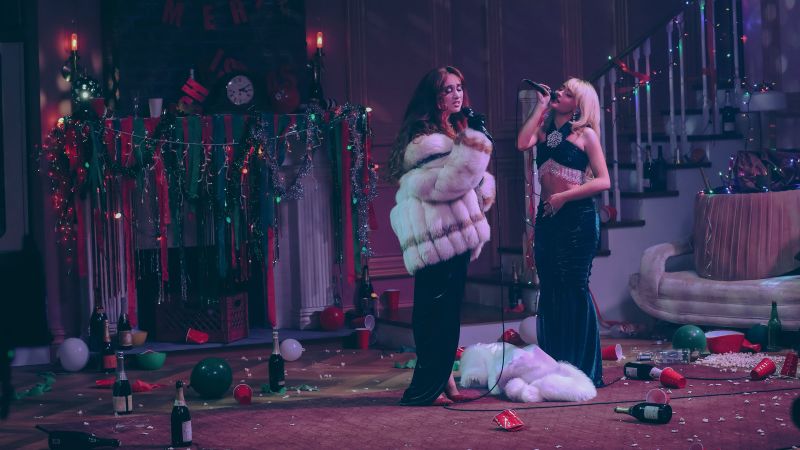Entertainment
Tina Mabry Hopes To Reignite The ’90s Black Film Era With Her New Movie
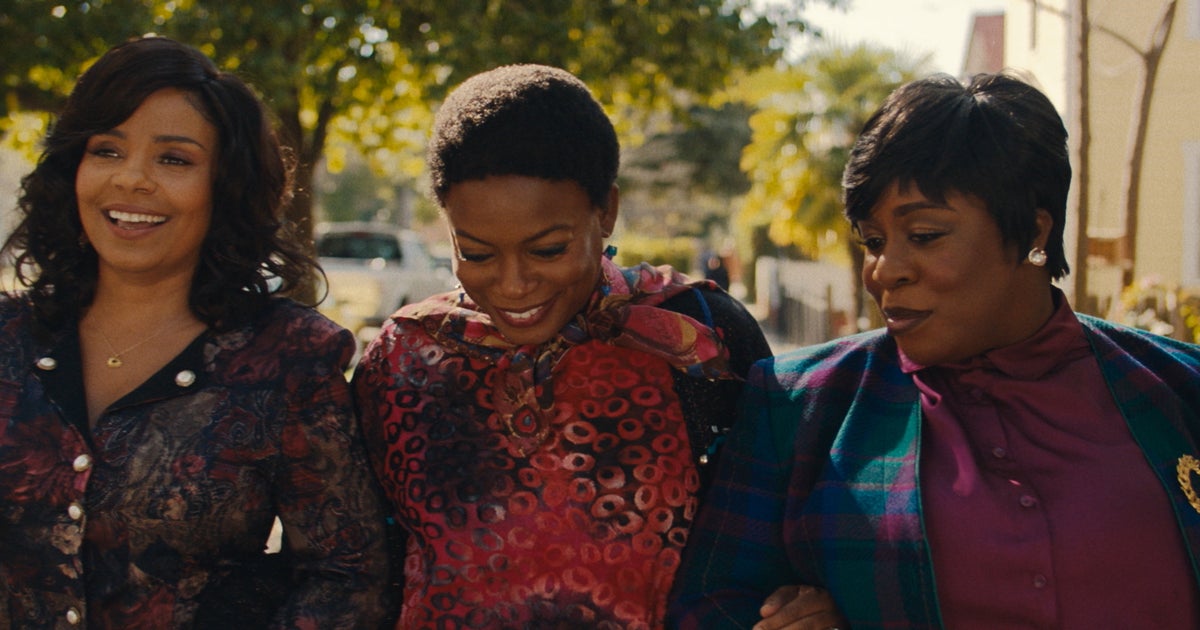
“I think there kind of needs to be a little bit of a come-to-Jesus moment for us as an industry to say, ‘What are we doing?’”
I’m about an hour into a candid conversation over Zoom with director Tina Mabry about her new movie, “The Supremes at Earl’s All-You-Can-Eat” and, even more so, the state of Black cinema, when she says that.
It’s a fair diagnosis, even from an audience member’s perspective.
A few weeks prior to our sitdown, I screened Mabry’s latest film and couldn’t get over how much of a relic it feels like. It’s a story about three Black women who call themselves “The Supremes” (no relation to the music group), whose friendship spans decades beginning in 1960s Indiana. Throughout it all, they experience all aspects of life: personal conflicts, triumphs, belly-aching laughs and damn good food. It’s a rather simple concept, not particularly exceptional.
But it took me back to the cozy Black female friendship films and TV series like 1989’s “The Women of Brewster Place” and 1995’s “Waiting to Exhale.” These and offerings like them went on sprawling journeys with Black women, who you couldn’t help but root for even when they made you want to yell at the screen or just as quickly laugh or cry. For Black women, they reminded us of our own families and friends, even though larger-than-life actors like Oprah Winfrey or Angela Bassett helped illuminate their stories from their literary sources.
“The Supremes” boasts these things as well, with its own star power in the form of Sanaa Lathan, Uzo Aduba and Aunjanue Ellis-Taylor with the bestselling 2013 novel by Edward Kelsey Moore as source material.
It’s not like this type of narrative doesn’t still exist. But similar films are few and far between, and many of them don’t even see the light of day. One reason, Mabry suggests, is that Hollywood spends more resources on blockbusters and far less on what the industry frustratingly now considers niche, like independent Black cinema.
Matt Carr via Getty Images
“Y’all could still make money and we can still make art,” Mabry said, in an exhaustive though honest appraisal of Hollywood. “The two don’t have to cross each other out, and everything doesn’t have to be a Marvel movie. It just doesn’t.”
Don’t get her wrong: She’s not condemning “Deadpool & Wolverine” or the existence of the Marvel Cinematic Universe. What she’s talking about is a healthy balance of those and other movies. Even her Marvel-loving 19-year-old is over it.
“She said, ‘I believe they oversaturated the market,’” Mabry tells me. “At that time, she was 18. She’s like, ‘Well, I’ll still go see because I’m invested…’ But she wants to see other things.”
Mabry, 46, has spent much of her career doing her part to help variegate the market with good stories. Just one glance at the posters on the wall behind her in her Los Angeles office proves that. “An American Girl Story: Melody 1963,” “Mississippi Damned” and “Queen of the South” are all movies and TV series the filmmaker helmed that explore the Black imagination, abuse, addiction and the ruthless female leader of a Mexican cartel.
“It’s on us to make it,” Mabry said. “And it’s not like we don’t have a plethora of filmmakers to do it, the talent to do it. We just don’t have the money and the distribution. And if we get those two things, we can do it. But we are missing those two things, and we need help with that.”
The marketing issue is a big one. Mabry lists movies such as 1997’s “Love Jones,” 1994’s “Jason’s Lyric” and 1988’s “I’m Gonna Git You Sucka” that, like “The Supremes,” feel like antiques. In that era, Black films seemed to be more supported by studios and Black audiences actually knew they existed and were excited about them. They have few counterparts today.
“They’re not coming out, and don’t tell me there’s not an audience for it,” Mabry continued. “Sometimes it can be a laziness in marketing about how to reach people.”
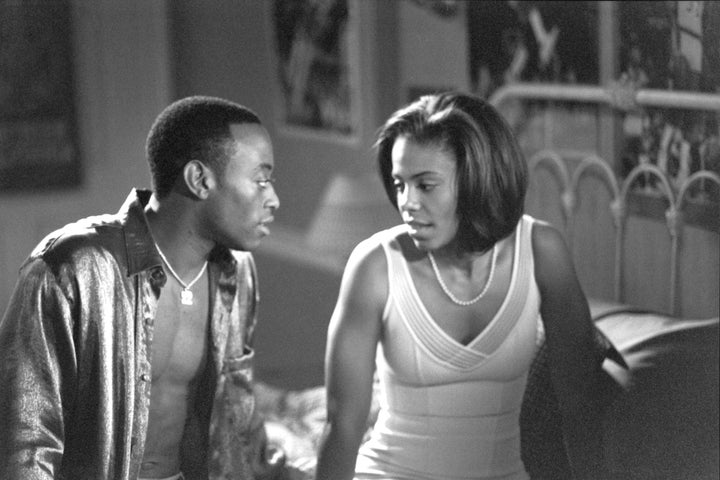
Michael Ochs Archives via Getty Images
As an example, the filmmaker points to 2000’s much beloved romantic drama “Love & Basketball,” written and directed by her mentor Gina Prince-Bythewood, who also did the initial adaptation for “The Supremes” before passing it on to Mabry, who soon ran with her own version.
“I remember the first time I saw a trailer for ‘Love & Basketball’ before I saw the film,” Mabry said. “Gina would be the first to admit that was not the right trailer for that film. They just said, ‘Well, you see Black faces, y’all will go see it.’ That wasn’t the case.”
Well, the movie did open in the No. 2 spot at the box office, and went on to make over $8 million that weekend. Still, after watching the trailer again for the first time since 2000, I can kinda see what Mabry is saying there. While the trailer generally captures the movie’s themes of both platonic and romantic love and sports ambition, it doesn’t tease any of the film’s nuances that have helped make it so highly regarded — particularly among the Black community — all these years later.
“Like, pressing people’s hair,” Mabry said. “I can’t tell you how many times I’ve had to fight about a character going to sleep on-screen. And they didn’t want that character to have their hair tied up. I said, ‘There is no Black woman that’s going to bed without tying their hair up.’”
It wasn’t until a then-law-school-bound Mabry was perusing Blockbuster when she caught a glimpse of “Love & Basketball” on VHS tape that she had finally decided to check it out. Why? Because of the film’s cover jacket.
“Cover artwork is important,” she reflected. “I read on the back and said, ‘Why not? I don’t wanna study for this LSAT.’ Then, bam, a whole life is changed. But if I was relying upon that trailer, that was not going to be the thing that changed my life.”
Though Mabry is quick to consider today how a compelling trailer and cover art could help sell a movie, that kind of business savvy was far from her mind when she first left her parents’ home in Tupelo, Mississippi, for the University of Southern California film school 23 years ago.
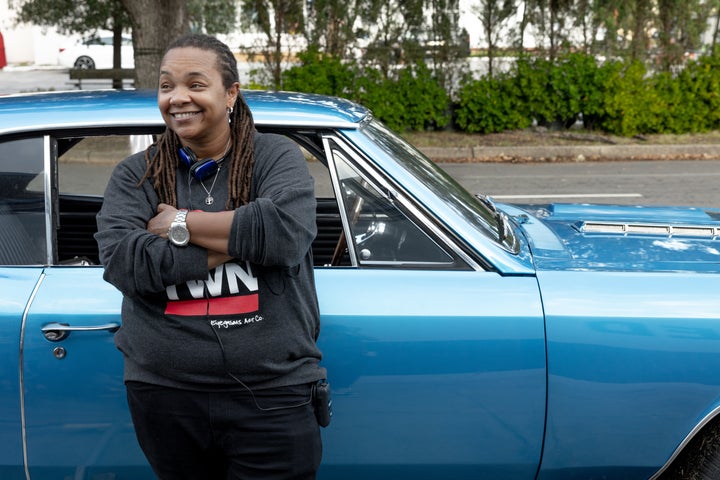
Photo by Dana Hawley, Courtesy of Searchlight Pictures.
“May 26, 2001,” to be exact. As she does many times throughout our conversation, Mabry drifts into the past as she recites that date to me. That was the day she had long planned for her journey to film school. She hadn’t even heard back from USC yet when she already decided to pack up her things and head west.
“I drive out here with my dad all the way across [the country],” she recalled. “I have an apartment I found online — a studio in Koreatown for 900 bucks a month. I have an unpaid internship. I have 200 bucks in my pocket that I’ve saved up since I graduated from substitute teaching.”
She bet on herself, which tells you a lot about Mabry’s unwavering drive. As she waited for her eventual college acceptance letter, she landed a job at Omaha Steaks — and her sales were pretty high, too. “You know, carnivores out here,” she tells me with a hint of sarcasm.
But she soon dived headfirst into her studies at USC, learning everything she could about filmmaking while struggling to afford each expensive semester. While she describes the film school as “impeccable,” there is one thing she said she could have benefited from.
“I will always say that USC taught me how to make a fantastic film, but they did not teach me how to sell myself or that film,” she admitted.
That’s a bit of a surprising revelation, considering that she’d seemed pretty comfortable talking about herself and her filmmaking process throughout our conversation.
“I’m nerdy and sometimes shy,” Mabry continued in her Southern twang. “I don’t know about going out here and talking to people like I gotta go out here and talk, other than opening my mouth as I’m just country.”
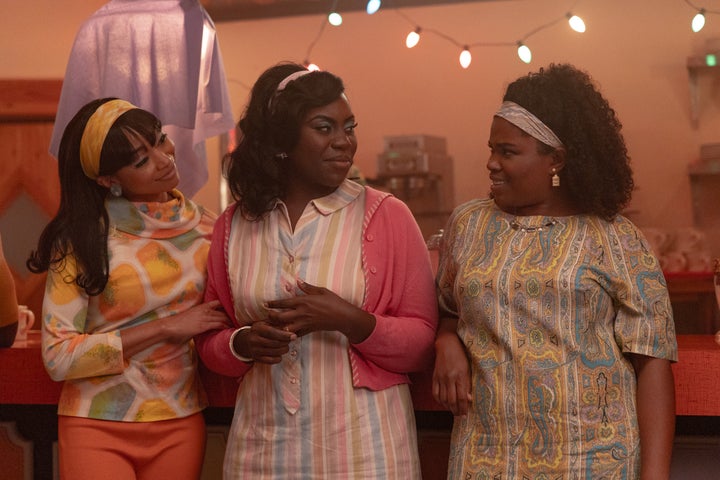
Photo by Dana Hawley, Courtesy of Searchlight Pictures.
She grinned as she said that, but her comment made me think about marketing and how “The Supremes at Earl’s All-You-Can-Eat” hasn’t achieved the same level of fanfare as many of its white counterparts.
And that’s not necessarily because of anything Mabry is doing. She’s been promoting the film on social media and had just returned from screening it at the Martha’s Vineyard Film Festival and being on a panel at NABJ when we sat down to talk. But it was only less than two months ago when the trailer for “The Supremes” dropped online, taking many by surprise because few had even heard of the film and were instantly excited about it.
Add to that, some social media users were disappointed that it would be a streaming-only release on Hulu and not hit theaters. I wondered whether a lack of marketing effort or some other industry woe — there’s so many of them, including the ones Mabry had already lamented with me — had anything to do with that.
“Well, when I first got attached to it, it was supposed to be a theatrical release,” Mabry began to explain. “But at the same time, I also got attached to this film in what? 2018? We had a whole pandemic and a strike in between.”
Fair points. She and her team shot the movie in 2022, when things were still a bit dicey with masks and other precautionary mandates. Still, they had fully planned to open in theaters. But a six-month writers strike threw the entire industry into disarray.
“We’re all looking at this new landscape, and we don’t know what we’re looking at,” Mabry remembered. “We don’t know where we’re going. And it still is very much scary in that approach.”
So, things naturally shifted, Mabry said.
The concern from fans, though, especially at a time when there’s been rampant conversation about declining movie theater attendance, is that the film wouldn’t make the same amount of money it would have had it opened to theaters. That is particularly pressing for Black films already disproportionately impacted by industry budgets.

Photo Courtesy of Searchlight Pictures.
The filmmaker nods at my mention of that, but looks at it a bit differently when it comes to “The Supremes.”
She tries to imagine a big turnout for her the new film. “I’m from Tupelo, Mississippi,” she said, noting that her hometown isn’t in a big market and that the film would likely open in limited theaters. “I can’t go to Jackson, Mississippi. It probably won’t be there. That’s three hours away. Chances are probably Chicago. That’s 16 hours from my house.”
“When you do, at times, have a limited release, you miss many people theatrically,” she added.
“Then you look at that number, you’re like, ‘Why aren’t the numbers great?’ Well, we don’t know it exists, we don’t live there and we can’t get there.”
And just like that, Mabry is thinking like a marketing person.
“I think the upside, though, of it being streaming — I try not to look at it, like, ‘Oh, my God, we’re not theatrical and that hurts and is a dagger’ — is that, look how many more houses we’re gonna be able to get into.”
Mabry is banking on the “hundreds of millions” of TV screens with a Hulu subscription, including some in Tupelo, to watch the film. The idea of eventizing the film — or, as she described it, getting your granny, your church friends and your crew together — is part of what drove her to make the film in the first place.
She thinks about the “Supremes” in her own life. The friends she’s had since she was 12 and those she met at USC 23 years ago, with whom she formed “a sisterhood.” Their love for each other, she said, touches each aspect of the film’s narrative.
“What I wanted to do is just look at what friendship looks like,” Mabry said. “Because those are the relationships that sometimes outlast our romantic relationships, our occupation and other family members that we have.”

Frank Trapper via Getty Images
They’re the ones who hold us down, the director went on, “who keep us true to one another, who will call you out on your shit, but also build you up. When your cup is dry, they’re the main ones that are coming to make sure that it’s full. And if you got a crack in the cup, they’re coming with the Krazy Glue to keep it together.”
She pointed to films like 1991’s “Fried Green Tomatoes,” 1989’s “Steel Magnolias” and, of course, “Waiting to Exhale” as her inspirations while adapting the film. “I don’t usually tell anybody,” she confessed afterward.
They’re rather obvious influences, though, especially if you’ve watched these versions of beautiful and sometimes thorny friendships. And if you spend even an hour, as I did, with Mabry, who can’t seem to stop herself from longingly looking back on this particular time in film.
“It was important to me to look at that era of cinema, which was completely rocking — the amount of films that we had coming out,” the filmmaker said. “We don’t, unfortunately, have that canon of films today for a variety of reasons. But I wanted something to feel nostalgic for us.”
That’s all true for the story in “The Supremes at Earl’s All-You-Can-Eat” and for Barbara Jean, Clarice and Odette, the heroines at its center. They’re loving, hilarious, dealing with their own baggage and sometimes messy.
Most strikingly, though, this is an honest depiction of Black friendship. And familiar in ways that might discomfort some. Mabry anticipates that.
“The dirt that we sweep under the rug, telling the stories that we don’t say,” she said. “The stories that fall in the gray, ’cause life is not black and white. That’s where I like to lean in.”

Anthony Barboza via Getty Images
The story at the center of “The Supremes” includes things we don’t often discuss; infidelity, dreams deferred, addiction and abuse within the Black family. Mabry seems to understand that not every conflict stems from race or racial trauma, even in the ’60s era that kicks off the story in “The Supremes.”
“To be able to tell a story where it’s not all about trauma,” she said, thinking about her own motivations for adapting “The Supremes.”
“And also, when we do have trauma, are our stories always being told as victims of a white antagonistic form who is leading our entire storyline, dictating what we do?” Mabry asked. “Every decision is made because of this white antagonist. And no, that’s not it.”
It’s true that some of the most celebrated Black films largely contend with white conflict — and many are helmed by white filmmakers. “Green Book,” “The Help” and “The Blind Side” all come to mind. And too many neglect the fact that many Black people also deal with trauma within our own communities and lives.
Mabry has long examined that latter point in movies including her autobiographical “Mississippi Damned” and “The Supremes.” Generational trauma, health concerns, heartbreak and personal gains, career dreams are just a few of the things she’s interested in. “The minutiae” of the Black experience, as she described it, is what inspires her.
“As an adult, what has happened in my childhood or with my parents or repeating the same thing has nothing to do with race at all,” the director said. “Like, it does in a big sense of financial stuff, social-economic. We can go through that. But let’s just get on this level.”
She’s processing these more granular details in a healthy way, essentially. “I bring that trauma,” Mabry continued. “I do bring the good as well. The love too — into every relationship that I have. And how do I get the people around me that I love, my Supremes?”
To be fair, “The Supremes” is still rooted in the realities of race in each timeline it depicts. It’s just not the premise of the story. Like teenage Barbara Jean’s (Tati Gabrielle) fraught romance with a young white man (Ryan Paynter).
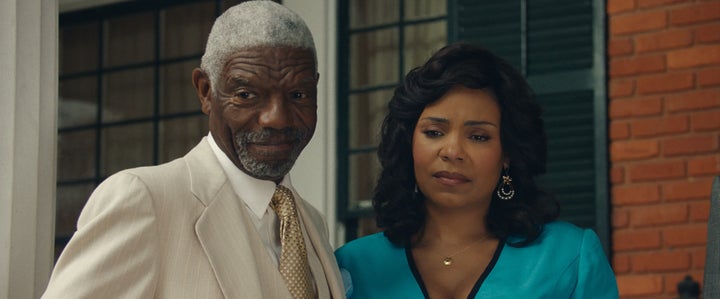
Photo Courtesy of Searchlight Pictures.
“It’s not something that is pulsating throughout the whole movie,” Mabry said. “This is a reality of, yeah, if you’re gonna have an interracial relationship in the ’60s, it’s gonna be some problems.”
Mabry’s and my conversation ran the gamut of complex and human films like 1997’s “Eve’s Bayou,” 1934’s “The Imitation of Life” and 1999’s “Boys Don’t Cry”; the types of films she said her mom, a wannabe actor during the Jim Crow era, and her would discuss for hours.
“That’s where I started to understand, I really love film,” Mabry said, wistfully. “We would sit and watch these old movies. She would take me through movies [her mother and aunts] saw where they had to sit on the balcony because it’s a segregated theater. They could quote it.”
It’s also when she began to realize that some movies don’t necessarily have to be astonishing or the best ever. They just had to seep into her skin so much that she couldn’t shake them.
“It doesn’t have to be a masterpiece at all,” Mabry said. “But it needs to stick with you.”
We don’t get as many of these films anymore, particularly in today’s vibes-only era where message is often more prominent than characterization or story.
“I think about so many films that I literally forgot I watched. I shouldn’t just have all these old ’90s or ’80s horror films stick with me longer than something that came out in 2010 that was supposed to be really good, got an Oscar nomination or something.”
It’s only while reflecting upon this conversation with Mabry days after it ended that I began to ponder exactly which 2010 movie she could have been referring to. The “True Grit” remake? “The Blind Side”? “The King’s Speech”? It could have been any of those.
“The Supremes at Earl’s All-You-Can-Eat,” though, doesn’t have that problem. Its deep understanding of complex experiences that Black women share, as well as the love that was so obviously poured into it, makes it much harder to forget.
“The Supremes at Earl’s All-You-Can-Eat” streams on Hulu Friday.

